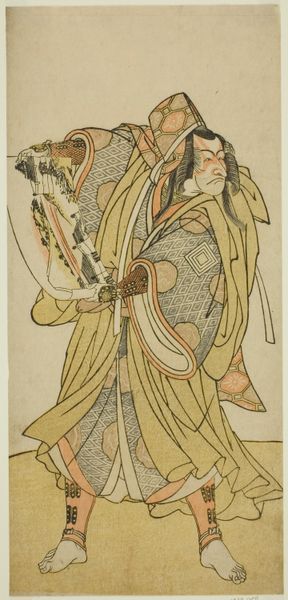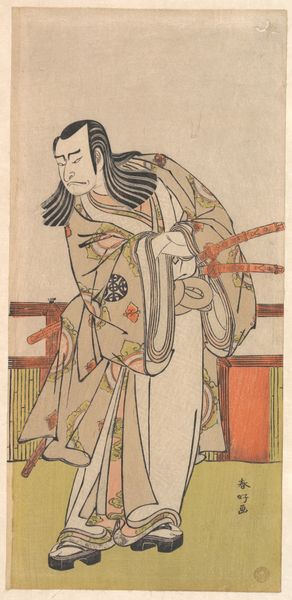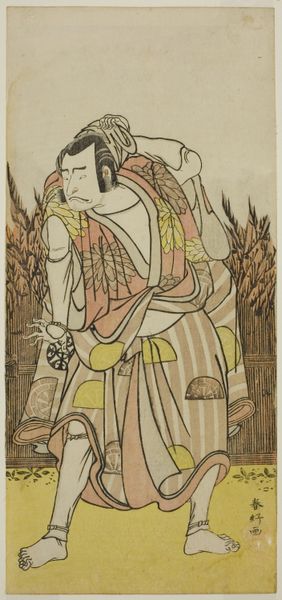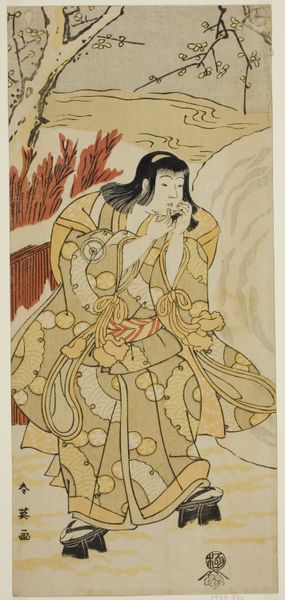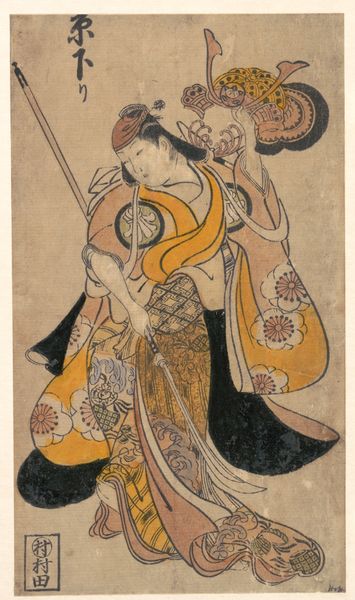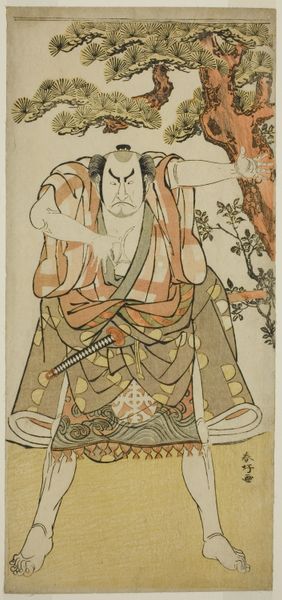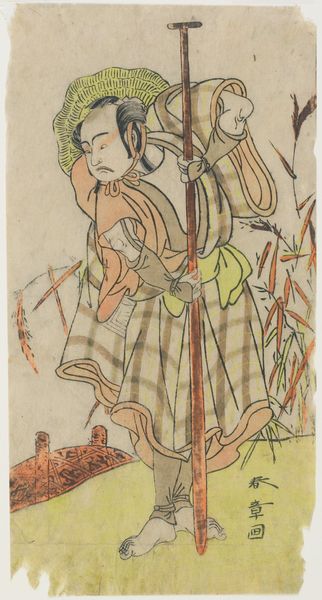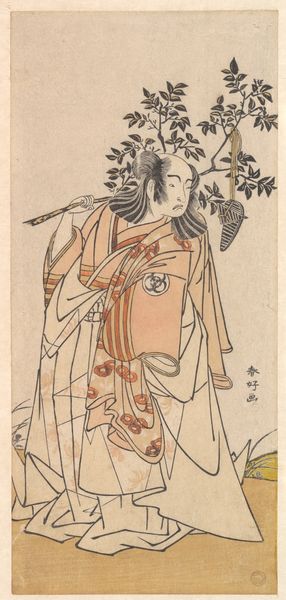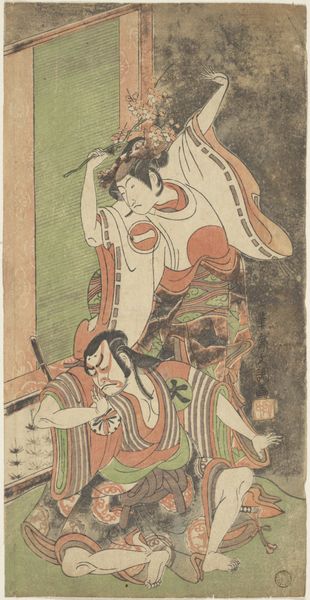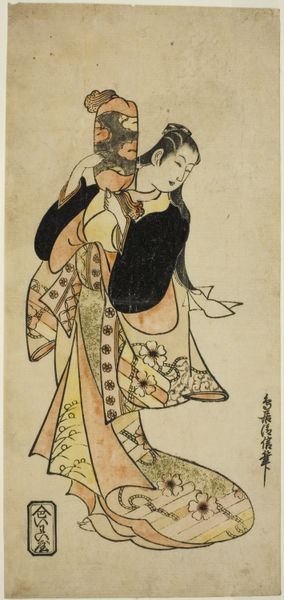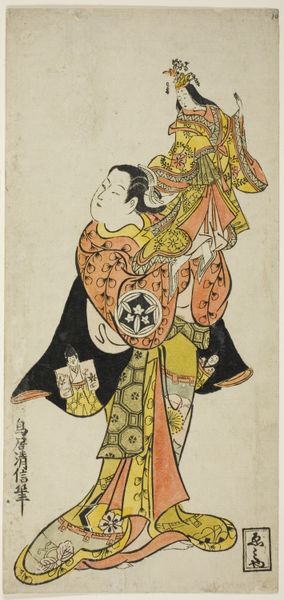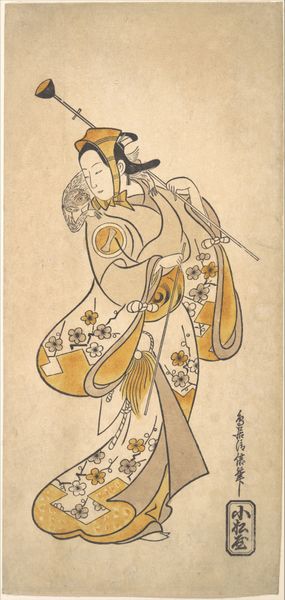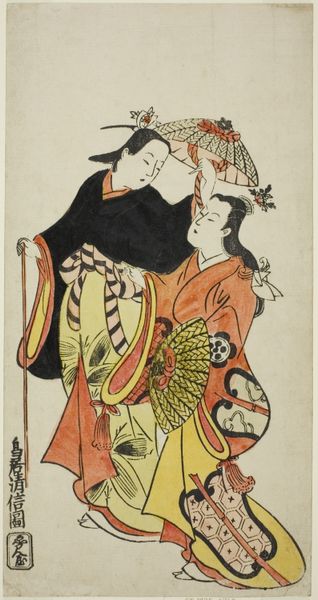
The Actor Ichikawa Danjuro V as Kazusa no Akushichibyoe Kagekiyo Disguised as a Blind Court Musician (Kengyo) in the Play Edo Meisho Midori Soga, Performed at the Morita Theater in the Fourth Month, 1779 c. 1779
0:00
0:00
print, woodblock-print
#
portrait
#
ink painting
# print
#
asian-art
#
ukiyo-e
#
woodblock-print
Dimensions: 28.6 × 13.7 cm (11 1/4 × 5 3/8 in.)
Copyright: Public Domain
This woodblock print by Katsukawa Shunkō, made in 1779, depicts the actor Ichikawa Danjuro V as a blind musician. A bamboo grove stands behind him, a symbol of resilience and flexibility. The actor clutches a fan, a typical prop, but here it also conceals his true identity. Consider the bamboo. In Asian art, it’s not merely decorative. It signifies moral integrity and the ability to endure hardship, much like our disguised actor. We can see echoes of this symbolism across cultures: think of the steadfast oak in Germanic lore, each a reflection of cultural values projected onto the natural world. Notice too, the actor's bare feet. This vulnerability is striking, contrasting with the strength implied by the bamboo. This evokes a deep, subconscious understanding of the dual nature of man: strength and fragility intertwined. This image, like cultural memory itself, isn't a static relic. It's a vibrant, evolving narrative that continues to resonate, reminding us that symbols live on, adapting and reappearing in the theater of human experience.
Comments
No comments
Be the first to comment and join the conversation on the ultimate creative platform.
